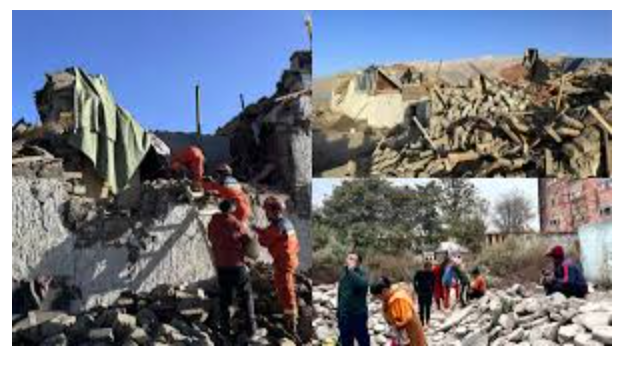Tibet Earthquake: Scores Dead As Earthquake Strikes Chinese Border City.
A devastating earthquake with a magnitude of 7.1 struck Tibet’s holy city of Shigatse early Tuesday morning, claiming at least 95 lives and leaving 130 people injured, according to Chinese state media. The tremor, which occurred around 09:00 local time (01:00 GMT), was followed by a series of aftershocks, with its epicentre located in the mountainous region near Mount Everest in Tingri county.
The US Geological Survey reported the earthquake at a depth of 10 kilometres, while China’s state media recorded it slightly less at 6.8 magnitude. The event has caused significant damage, with over 1,000 buildings affected, as shown in videos from China’s CCTV where rescue workers were seen navigating through rubble and distributing blankets to locals amidst freezing temperatures, expected to plummet to -18°C tonight.
Shigatse, a city steeped in spiritual significance, is the traditional seat of the Panchen Lama, whose role in Tibetan Buddhism is paramount, second only to the Dalai Lama. The geopolitical tensions around the selection of religious leaders were highlighted by the disappearance of Gedhun Choekyi Niyima, identified as the reincarnated Panchen Lama by the Dalai Lama, who was taken by Chinese authorities at age six. China subsequently appointed its own Panchen Lama, a move that underscores the ongoing cultural and political friction in the region.
The current Dalai Lama, who fled to India in 1959, remains a figure of significant influence among Tibetans, many of whom are wary of Beijing’s control. This earthquake marks one of the deadliest natural disasters in China in recent times, adding another layer of hardship to the already tense socio-political landscape.
The impact of the earthquake extended beyond Tibet, with tremors felt in Nepal and parts of India. In Nepal, while no casualties have been reported, the memory of the 2015 catastrophic earthquake that killed nearly 9,000 people lingers, causing panic as residents in Kathmandu recalled their experiences. Manju Neupane, a local shop owner, expressed her fears to BBC Nepali, “I am scared that another major earthquake may hit us and we will be trapped between tall buildings.”
Rescue operations are in full swing with the Chinese air force deploying drones and helicopters for aid and assessment. President Xi Jinping has issued directives for an all-out rescue effort to minimise further loss of life and to ensure the safety and resettlement of those affected.
The region’s geological vulnerability, situated on the convergence of the Indian and Eurasian tectonic plates, means that such seismic events are not uncommon. However, the scale of this earthquake and its impact in one of Tibet’s most sacred and now, sadly, devastated locales, underscores the urgent need for effective disaster management and preparedness in these high-risk areas.



